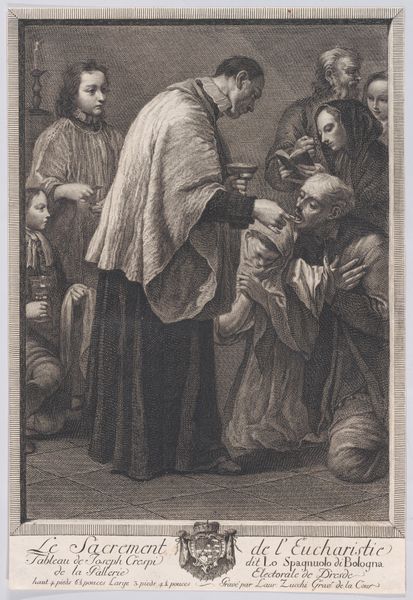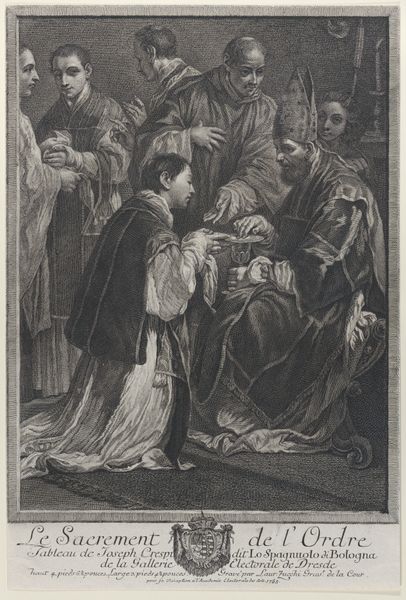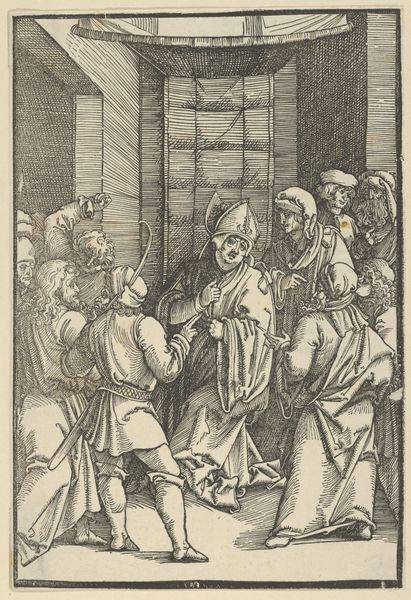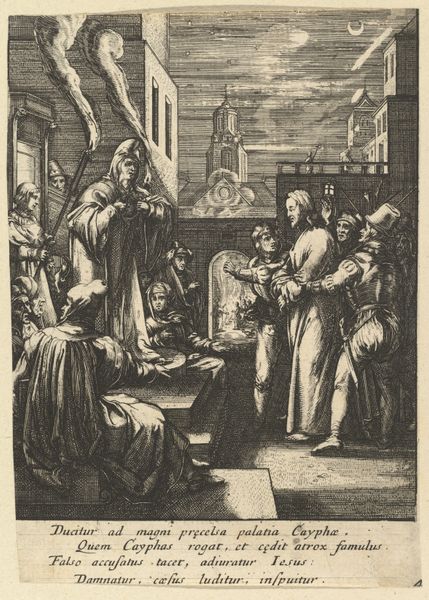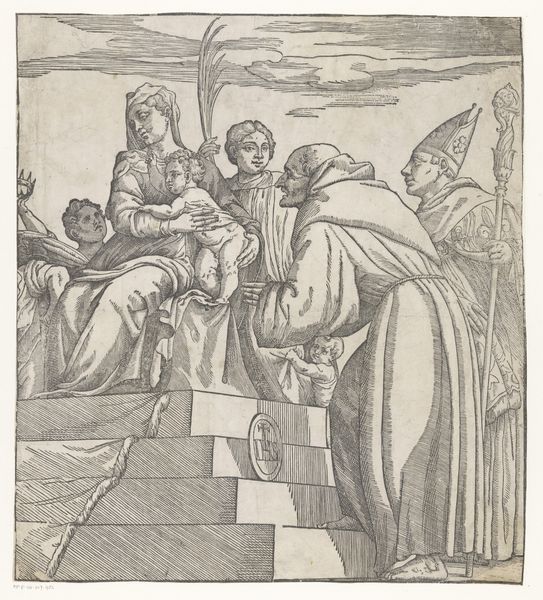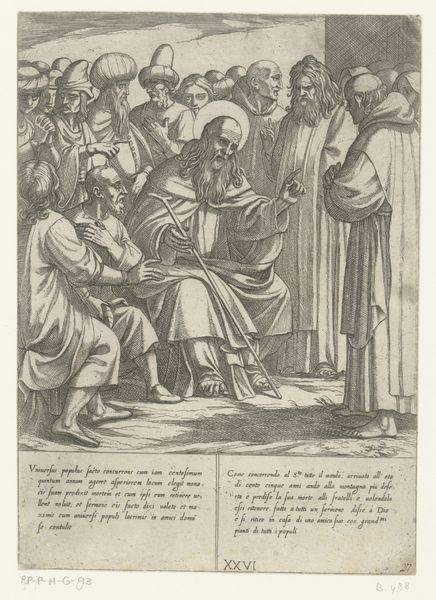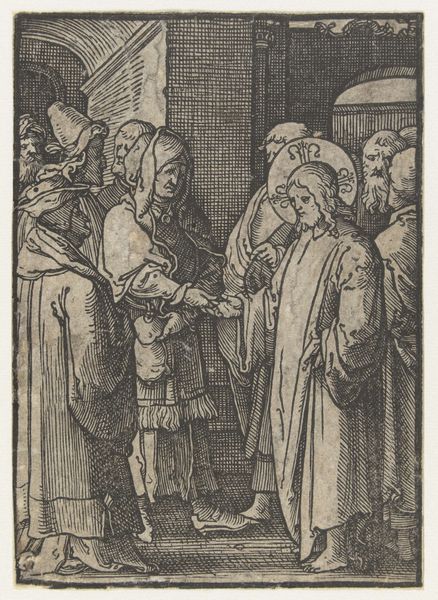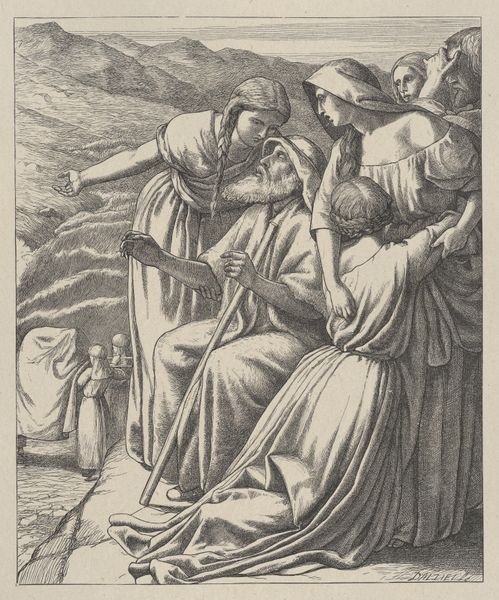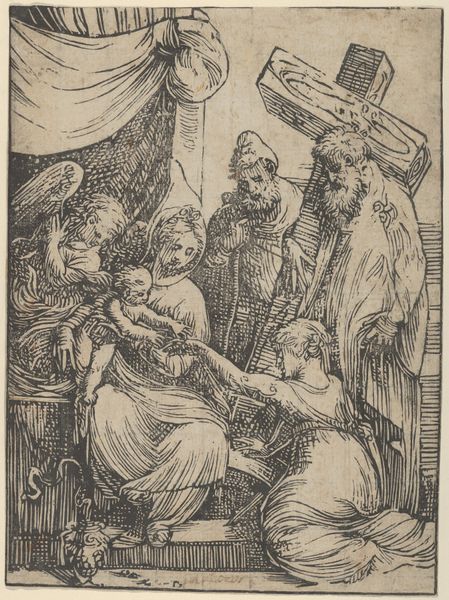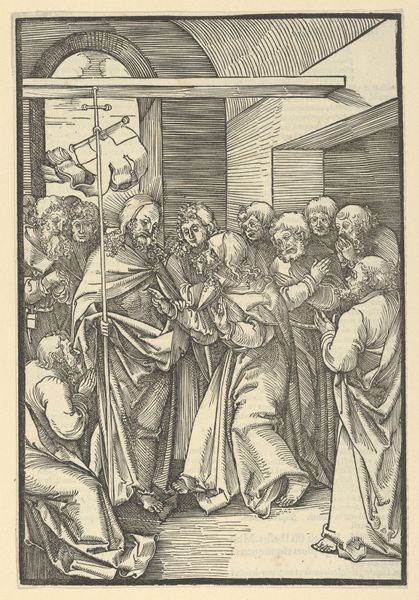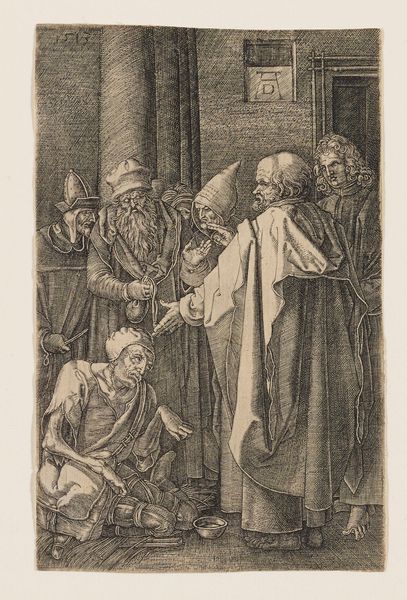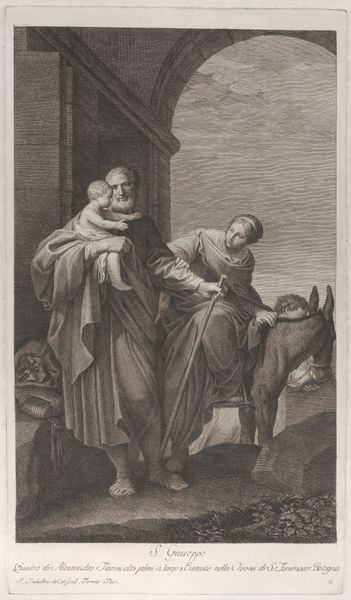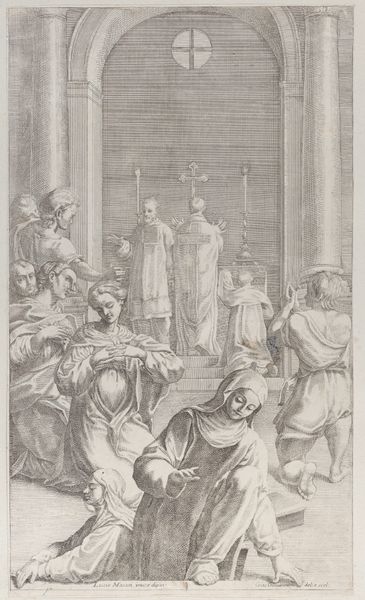
Dimensions: Sheet (Trimmed): 17 3/16 × 11 7/16 in. (43.7 × 29.1 cm)
Copyright: Public Domain
Curator: This engraving from 1767 is titled "Confirmation, from 'The Seven Sacraments.'" It's by Lorenzo Zucchi after a painting by Giuseppe Crespi, and it now resides at the Metropolitan Museum of Art. I’m curious what catches your eye about this image? Editor: Well, there's a real somber weight to it. The blacks and grays, the downward glances... it feels more like a transaction than a blessing, oddly enough. Is that just me? Curator: Not entirely. It's Baroque, after all. And this is a moment of serious religious significance. Notice the key symbolic gesture: the laying on of hands. The bishop literally touching the head of the kneeling child. That touch transmits grace, authority, tradition... a whole system of belief in one point of contact. Editor: That's a fascinating interpretation of “the laying of hands”. But the surrounding figures seem to me more spectators than active participants. Are they meant to symbolize something about community and tradition, or are they just a stage dressing for the event? Curator: I see them as both, actually. The figures definitely play a dual role. Their faces, though individualized, lack any profound engagement, drawing our focus to the confirmation ritual. It reminds us of religious practice as performance but also as shared social identity. They are witnessing, thereby affirming, a moment of cultural continuity. Editor: Hmmm… And that staff and the tray being held – are they significant too? All this ornamentation must mean something. Curator: Absolutely! The staff speaks to the authority of the church and the bishop’s role. The tray is a eucharistic vessel containing the consecrated hosts to symbolize and facilitate grace to be shared to the boy. Editor: Okay, I’m seeing a web of authority, tradition and social expectation that all comes together in that moment of the blessing. Curator: Yes, indeed! A seemingly simple moment, charged with symbolic weight, artistic design and faith. Editor: It’s certainly provided food for thought. All of this has revealed a new appreciation for its layered meaning and social-religious context.
Comments
No comments
Be the first to comment and join the conversation on the ultimate creative platform.
